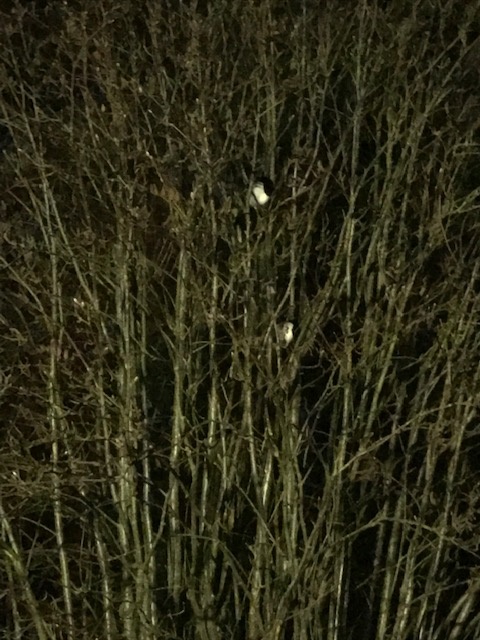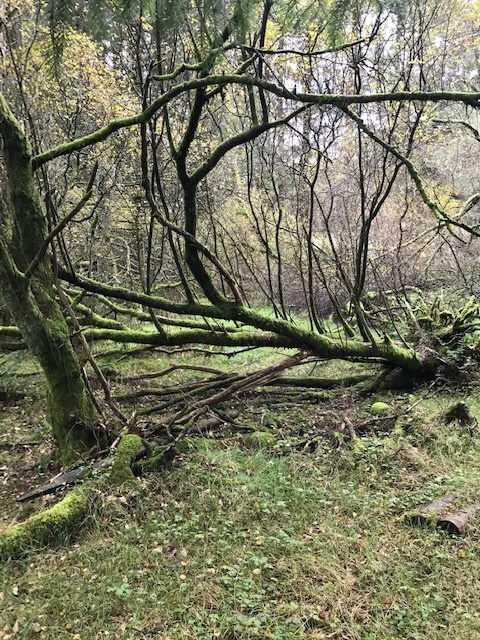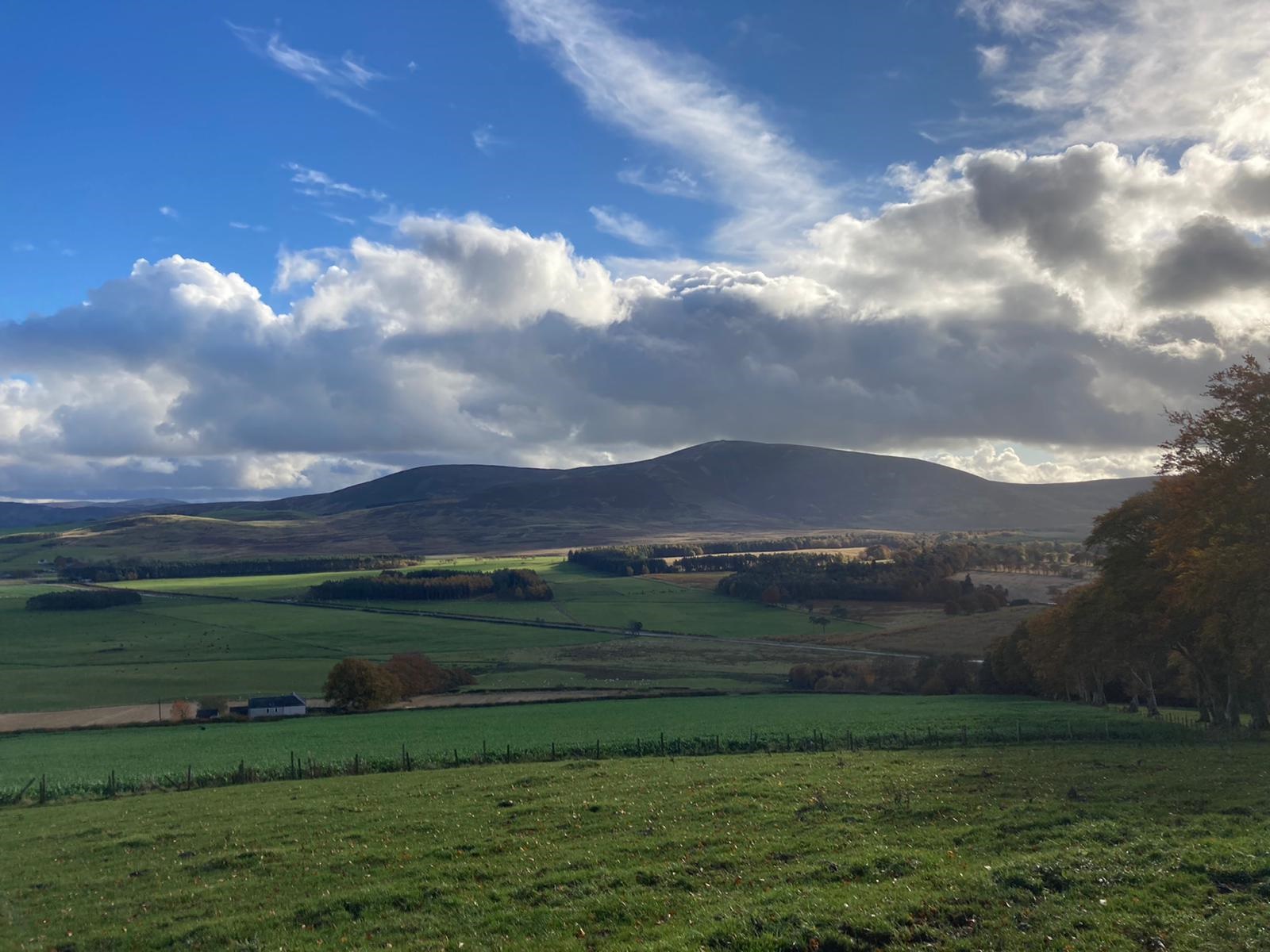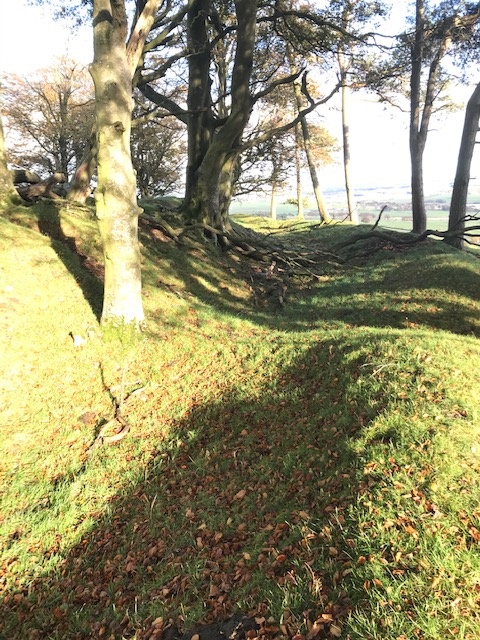
The Leica Trinovid HD 8 x 32; a marvellous companion for autumn exploration.
A work begun November 5 2020
The Leica Trinovid HD 8 x 32 has been my constant companion over the last few months, having gone on long days out, both at home, and on vacation to the Scottish borders. It has also been a marvellous instrument in my ongoing exploration of the binocular night sky. It’s one of those pieces of kit that keeps on delivering, time and time again, and while it is expensive as binoculars come, I think it was worth every penny, for reasons that I wish to elaborate on in this blog.
A Blaze of Autumn Glory
The vibrant colours of autumn are a visual gift from the Lord, a pick-me-up before the dull, cold days of winter. They’re meant to be enjoyed and there is no finer glass I’d rather use to explore them. Many Leica aficionados have described the extraordinary vibrancy of reds, oranges and greens they get from their binoculars. For a while, I dismissed that claim as subjective prattle, but having enjoyed the 8 x 32 Trinovid for several months now, I can more fully understand what they meant. And there may be some science to back that up. For example, the opticians at Leica can optimise the colour correction to peak in the green-red part of the visible spectrum, while leaving the blue end less corrected. I see evidence for this using the 8 x 32, since it does show some blue-violet fringing on highly contrasted targets. The fringing is only very slight mind you, and very lovely; in an innocent way; so I think it’s an acceptable compromise.
While the human world is increasingly dark, psychotic and distressing, I make a special effort to get outside and make the most of my free time, enjoying the wonders of creation. Unlike humans, mother nature still behaves as God intended it. The low autumn Sun creates extraordinary light shows, illumining the hills round my home. The contrast in this little Leica binocular really has to be seen to be believed. Its exceptional control of veiling glare produces images that are truly sumptuous to my average eyes. Details just pop. The intricate graining of tree trunks, the contours of exposed rock formations, the stark beauty of ruined farmhouses, castles and water mills – things and places hardly anyone notices have suddenly become worthwhile glassing targets, though I still get the odd funny look from passers by lol.
The exceptional close focus on the Leica Trinovid brings objects a smidgen less than 1 metre away into sharp focus. That’s unmatched by any binocular on the market, with the exception of the Pentax Papilio (with its 0.5m close focus). I have been able to get up-close and personal with rocks by the riverside and succulent autumn berries, and golden leaves glistening in weak sunshine after a shower of rain. The Scots are always moaning about the rain, but it is the key ingredient that creates and maintains the surreal beauty of the Scottish landscape. Long live the wet and the wild!
A Great Birding Binocular

Culcreuch Pond, looking east, with the Fintry Hills soaring in the background.
I’ve found the Leica Trinovid HD 8 x 32 to be the ideal birding binocular. With its 32mm objective lenses, it provides significantly brighter images than the best 25mm pocket glasses, particularly on dull, overcast conditions in the open air and in lower light conditions, such as under a forest canopy. And when the light is feeble, such as at dawn and dusk, the highly efficient light transmission(90 per cent) of the Leica glass really comes into its own, picking off details that elude lesser glasses. The silky smooth and fast central focusing wheel on the Trinovid is particularly well suited to birding, since it’s easy to adjust the focus as birds vary their distance from me. Added to this, is the instrument’s impressive depth of focus, allowing one’s subject to remain in sharp focus over a large range of middle-to-long distances.
My interest in birdwatching really took off during the cruel,in-human lockdowns starting in March earlier this year, and since then, I have continued to learn from books, as well as gaining some solid practical experience in the field. I have fitted new bird feeders in my garden and seed-laden fat balls that have served to lure many an avian species within striking distance. When I joined the RSPB, I was gifted a small bird box which our family has since erected about 2.5 metres above ground level on a conifer tree in the copse to the west of our large back garden. I have high hopes that it will become a cosy nesting place for some small bird come the spring.
The exceptional optical quality of the Leica has allowed me to observe all manner of bird; robins, finches, tits, wrens, tree-creepers, carrion crows, jackdaws, chaffinches, wood pigeons, collar doves and blackbirds, to name but a few, in glorious detail. I have also learned to recognise their distinctive voices, which helps me to pin down more elusive visitors that hide away in the bushes and hedgerows near my home. To date, my most thrilling sighting is a greater spotted woodpecker that keeps a keen eye on the fat ball feeder outside of my office. Having enjoyed all manner of small birds flitting to and fro for most of the time, I was overjoyed to observe one helping itself to a nutritious snack one afternoon in early October. Compared with all the other birds that usually come to visit, this handsome woodpecker, with its black and speckled white plumage and crimson red flank, seemed positively enormous in comparison. Indeed, I thought at one stage that it was going to tear down the fat ball feeder owing to its relatively large size, but all was well. In addition, my Leica was able to make out a small red nape on the bird which revealed to me its male sex. Isn’t that funny; unlike the fairer human sex, male birds are created to be more colourful in general than their female counterparts. Then again, I know some blokes who love nothing more than to dress up in garish, migraine-inducing colours, so maybe the distinction is not as well founded as I had thought lol.
Since then, I have identified another great spotted woodpecker in the large trees on Kippen Road, adjacent to the sports field in the village. They’re such timid creatures though, standing motionless for many minutes high in the canopy, and if it senses a threat, will quickly move to the opposite side of a tree trunk in order to hide. Beautiful birds!
Last year, I reported that a small squadron of magpies had taken up overnight residence in the rowan tree in my back garden. After a couple of months, they moved on., But this year, a couple of magpies have once again come to sleep in the same tree. Lots of folk have taken a disliking to these birds but I have found them to be charming and intelligent. Like Roman legionaries preparing for an overnight camp, I have observed them arriving at dusk, and carefully making their way to the centre of the tree, so protecting themselves from predators. And they’re up and away before dawn!

A pair of magpies resting overnight in the rowan tree.
Culcreuch Pond, about half a mile walk from my home, and featured in the image above, remains a favourite haunt of mine to observe ducks and mute swans that thrive in the small artificial waters immediately in front of the 12th century castle, that up to recently served as a popular hotel and retreat before it was shut down in January of this year, just before the China virus arrived. The beautiful, variegated hues of autumn trees flanking the shores of the pond makes for wonderful glassing opportunities and I’m always on the lookout for the odd grey heron hiding in the reedy shallows, and even a cormorant that took up residence there during the winter months of 2019. Hopefully, I will see one again this year, but so far with no luck.
On a recent October family vacation to a favourite farmhouse holiday cottage on the outskirts of Wigtown, on the Solway Firth, in Southwest Scotland, I was amazed to discover that the town had a little ‘harbour,’ which we had not visited before simply because we always took a different route down to the salt march. Though we’ve been no less than five times over the years, we had no idea that a tower hide had been constructed, dedicated to twitchers and other wildlife enthusiasts, which overlooks a pretty stretch of salt marsh, and which serves as a home to all manner of gull and wading bird. Alas, we only ‘discovered’ the hide on the final morning of our vacation. Thankfully, it was a bright and sunny spell and we were able to share some wonderful views of these creatures before making our way home. It’s amazing what lies right under your nose if you’re not looking for it! Needless to say, this will become a favourite spot for birdwatching on our next trip.

The view from the bird hide.
Extended Walks
At weekends and during our family vacations, I like to take off on longer 4-5 mile walks, exploring forests and hills. There are extensive forested regions near Newton Stewart, Wigtonshire, which provides great days out for families and groups of ramblers, with extensive forest trails to explore, either on foot or on mountain bikes. The feather weight of the Leica Trinovid 8 x 32 binocular allows me to carry it effortlessly through miles of difficult terrain. I am attracted to the riot of life that abide in forests. Fallen trees are a favourite glassing target in good light, where I can explore the vibrant colours of lichens, mosses and fungi that thrive on their rain-soaked surfaces. I have no compelling reason to glass in these places other than the aesthetic appeal of seeing the wondrous complexities of the creation, to activate the visual, auditory and olfactory senses as you wade through mud and decaying autumn leaves underfoot. The exceptionally robust build of the Trinovid lowers my anxiety levels, as I negotiate through bramble bushes and especially dense thickets of vegetation. This is an instrument that will easily negotiate knocks and bumps and still come up smelling of roses.

Interesting forest terrain near Newton Stewart, Wigtonshire.
On our journey home from Wigtown, we hooked up some old friends who live in a charming bungalow overlooking Tinto Hill near the village of Thankerton, Lanarkshire. Tinto soars just over 700m above the surrounding valley and makes for a good hill walk in the Spring and Summer months. But on this occasion, we decided to visit an old Roman fort dating to the Antonine Period in the mid-second century AD. Not much of the fort remains, save an old ditch that one can still walk around. There is also a bath house somewhere near the fort but we never got to see it that afternoon The fort overlooks the valley below, with Tinto imposingly rising to meet the sky on the far side.

Looking down on the valley from the Roman fort outside Thankerton, Lanarkshire, with Tinto Hill in the background.
A striking colonnade of trees leads the way up from the valley floor to the fort and is especially beautiful on a sunny afternoon, when the rich colours of autumn leaves dazzle the eye. One would be forgiven for thinking that the Romans created this too but such trees don’t live that long!

A visually striking colonnade of trees lead the way to the Roman fort.
The Romans had an active presence in Scotland during the High Empire but never attempted a full-scale invasion. The Scots love to pride themselves in claiming that the ancient Celts inhabiting these lands were too fearsome or intimidating for the Roman legions, but having studied Roman history at degree level, I understand that the likely truth is that they decided that it was just not economically viable to completely Romanise the northern part of Britannia. But try telling that to the Scots!

The ditch of the Roman Fort near Thankerton.
There is something really appealing about glassing a valley from a raised vantage. In my mind’s eye, I imagined the lonely vigils of a Roman auxiliary patrolling the turf ramparts of this ancient fort, looking down on the fields below and wondering if some raiding party would attack. What thoughts would have coursed through his mind?
Glassing in wide open terrain like this confers advantages to higher power binoculars. In this capacity, I hope to acquire another smaller Trinovid, the BCA 10 x 25, or a Zeiss Terra ED 10 x 25 in the near future, to enable me to explore this kind of terrain in greater detail.
Things Done Well
The 8 x 32 Trinovid was made for the great outdoors. I have used it in sub-zero temperatures, during the wee small hours of the morning observing the night sky. Even after an hour or so in such conditions, focusing remains silky smooth and precise, and the outer lenses remain fog free. When the instrument is taken in from the cold, some condensation does form on the ocular and objective lenses but disperses very quickly owing to the effective hydrophobic coatings applied to the exterior lens surfaces.
I have also tested the binocular in regard to its water proofing. Sound crazy? Perhaps! I filled a basin full of freshwater to a depth of about 8 inches and submerged the instrument in it, leaving it there for 15 minutes. I observed no air bubbles throughout the duration of that 15 minute episode, and after taking it out of the water and drying it at room temperature, I was delighted to see that it performed as good as it ever has. This little Trinovid is actually water proof to a depth of 4 metres, so my testing in this regard was rather modest. I suspect that many binoculars of lesser quality than this Trinovid are not really waterproof since they are not hermetically sealed. That’s just a hunch but I know of no one who is willing to sacrifice their binocular to the water gods, for fear that they might receive a nasty surprise!
The firmness of the eye cups on the Trinovid are marvellously engineered; certainly among the best in the industry. They offer several settings to accommodate virtually anyone’s taste, and once set in place, they remain firmly in place with absolutely no wiggle room. With lesser quality binoculars, you’re always wondering when and if the eyecups will fail, but with these, you can be 100 per cent confident that they will work flawlessly again and again and again.
Most economically priced binoculars possess eye cups that can’t be removed. In contrast, the Leica Trinovid eye cups can be pulled off to get at trapped grit, sand and other air-borne debris that accumulates under the cups with repeated use. This enables you to thoroughly clean both the ocular lenses and their supporting structures before popping the cups back on again. And when the day comes when the cups finally give up owing to wear and tear, I can call the folks at Leica who will send out replacement caps! Now that’s what I call service!

Unlike cheaper branded binoculars, the Leica Trinovid eye cups can be removed safely to clean the ocular lenses and their supporting structures.
Exploring the Heavens
The Leica Trinovid 8 x 32 has become my constant companion under the stars. In the last few months, I’ve greatly reduced my telescopic observations in favour of binocular surveys. Indeed, I have elected to learn the night sky completely anew using this binocular, choosing a patch of sky within a constellation, and carefully studying each binocular field that I chance upon. I have ‘discovered’ many new asterisms, star clusters and nebulae in this way using the 7.1 degree field of this binocular. The project will likely preoccupy me for years to come, but I derive great joy from it. After spending many decades peering through all manner of telescopes, it is so refreshing to re-learn the constellations using this fantastic binocular. Call it a new lease of life!
I’m very much looking forward to observing the great planetary conjunction of Jupiter and Saturn, which reaches its climax just a few days before Christmas 2020. The Lord created the heavens to reveal His great power and glory. But He also gave us the starry heaven for signs & seasons. I understand this up-and-coming conjunction to be a possible sign that Yeshua foretold his disciples about the times concerning the closing of human history. Indeed, many of the other signs He prophesied have manifested before our very eyes; apostasy & the purging of the Church, a marked escalation in human wickedness which leads to lawlessness, false prophets, pestilences, wars and rumours of wars etc. What is more, the heavens similarly proclaimed the first coming of our Lord two thousand years ago with the Star of Bethlehem, that could well have been another planetary conjunction, a few of which occurred in the year spanning 2 to 3 BC. Like the fading of Betelgeuse last year, I believe the Jupiter-Saturn conjunction could well represent an unmistakable message from our Creator – that He will be returning soon for His Bride.
Even so, come Lord Yeshua!
Neil English is the author of seven books in amateur and professional astronomy, as well as several hundred magazine articles over the past 25 years. If you like his work, why not consider making a small personal donation, or purchasing one of his books. Thanks for reading!
Dear Neil.
Thank you for this review which I found informative/educational. It felt like I was beside when you described places and vistas glassing with your Leica’s.
I have probably read most of your reviews on other binoculars. You have taught me that Porro Prisms are excellent value for money. Thank You.
This have been on my list to purchase for a while after having the opportunity to try them out for a couple of hours. Clifton Camera has them on Easter Sale for £640 so I have ordered them.
P.S. I purchased a new pair of Curio 7×21 pocket binoculars, they are the most amazing devices I have ever used for there overall size and the ultimate portable test “will they fit in the front pocket of 501’s” yes they do.
I can send them to you for a review if you like.
Warmest Regards
David
Dear David,
Many thanks indeed for your encouraging words and very glad you enjoyed it.
Thanks also for your kind offer to test drive the CL Curio. I’d be happy to review it for you. You can reach me at neilenglish40@gmail.com.
Kind Regards,
Neil.